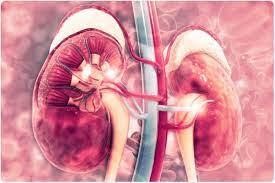A nurse is planning care for a client who is scheduled to receive a peripherally inserted central catheter in the arm. Which of the following interventions is appropriate for the nurse to include in the plan of care?
Measure the arm circumference above the insertion site daily.
Administer sedation
Schedule an MRI post procedure to verify placement
Use gauze to secure an arm board to the involved extremity
The Correct Answer is A
Choice A reason:
Measuring the arm circumference above the insertion site daily is appropriate. When planning care for a client scheduled to receive a peripherally inserted central catheter (PICC) in the arm, it is appropriate for the nurse to include measuring the arm circumference above the insertion site daily. This intervention is essential to monitor for any signs of complications, such as edema or swelling, which could indicate thrombosis or infiltration at the insertion site.
Choice B reason:
Administering sedation Administering sedation is not a routine intervention for a PICC insertion procedure is inappropriate. Sedation might be considered for certain procedures, but it is not typically used for PICC insertions. PICC insertions are generally performed with local anaesthesia at the insertion site.
Choice C reason:
Scheduling an MRI post procedure to verify placement An MRI is not typically used to verify the placement of a PICC. The placement of a PICC is usually confirmed using X-ray or other imaging methods that can visualize the catheter's location within the central veins. Post-procedure verification of PICC placement is essential to ensure proper positioning and to prevent complications.
Choice D reason:
Using gauze to secure an arm board to the involved extremity Using gauze to secure an arm board to the involved extremity is not a common practice for securing a PICC. After a PICC insertion, a securement device specifically designed for PICCs is typically used to secure the catheter in place and prevent movement.
Nursing Test Bank
Naxlex Comprehensive Predictor Exams
Related Questions
Correct Answer is A
Explanation
Choice A reason:
Eating 1 g/kg of protein per day is the appropriate recommendation. When providing discharge teaching to a client with chronic kidney disease (CKD) who is receiving haemodialysis, the nurse should include the instruction to eat an appropriate amount of protein, which is usually recommended at a specific daily intake based on the client's weight.
Clients with CKD often have dietary restrictions, including limiting protein intake to reduce the workload on the kidneys. However, protein intake is still necessary for maintaining muscle mass and overall health. The recommended protein intake for clients with CKD undergoing haemodialysis is typically around 1 gram of protein per kilogram of body weight per day.
Choice B reason:
Drink at least 3 L of fluid daily. Clients receiving haemodialysis typically have fluid restrictions, as impaired kidney function can lead to fluid retention and electrolyte imbalances. The specific fluid allowance will be determined by the healthcare provider based on the client's individual needs, and it may be significantly less than 3 L per day.
Choice Doption
Take magnesium hydroxide for ingestion. Magnesium hydroxide is a laxative and antacid used to relieve constipation and heartburn. It is not typically prescribed for clients with chronic kidney disease, especially without proper evaluation of their kidney function and overall medical condition.
Choice Coption:
C. Consume foods high in potassium.
Clients with chronic kidney disease, especially that undergoing haemodialysis, often need to restrict potassium intake. Impaired kidney function can lead to the build-up of potassium in the blood, which can be harmful. Therefore, it is essential for clients with CKD to avoid or limit foods high in potassium.

Correct Answer is B
Explanation
The correct answer is choice B. Increase exercise.
Exercise can help stimulate bowel movements and prevent constipation, which is a common side effect of opioid medications.
Exercise can also improve blood circulation, reduce stress, and enhance mood, which can benefit clients who have chronic pain.
Choice A is wrong because decreasing insoluble fiber intake can worsen constipation.
Insoluble fiber adds bulk to the stool and helps it pass more easily through the colon.
Clients who take opioid medications should increase their intake of insoluble fiber from sources such as whole grains, fruits, vegetables, nuts, and seeds.
Choice C is wrong because drinking less water can lead to dehydration and hardening of the stool, which can make it more difficult to pass.
Clients who take opioid medications should drink plenty of water to keep the stool soft and moist.
Choice D is wrong because taking a laxative every day can cause dependence, tolerance, and electrolyte imbalance.
Laxatives should be used only as a last resort and under the guidance of a health care provider.
Clients who take opioid medications should try other methods of preventing constipation first, such as increasing exercise, fiber, and water intake.
Whether you are a student looking to ace your exams or a practicing nurse seeking to enhance your expertise , our nursing education contents will empower you with the confidence and competence to make a difference in the lives of patients and become a respected leader in the healthcare field.
Visit Naxlex, invest in your future and unlock endless possibilities with our unparalleled nursing education contents today
Report Wrong Answer on the Current Question
Do you disagree with the answer? If yes, what is your expected answer? Explain.
Kindly be descriptive with the issue you are facing.
